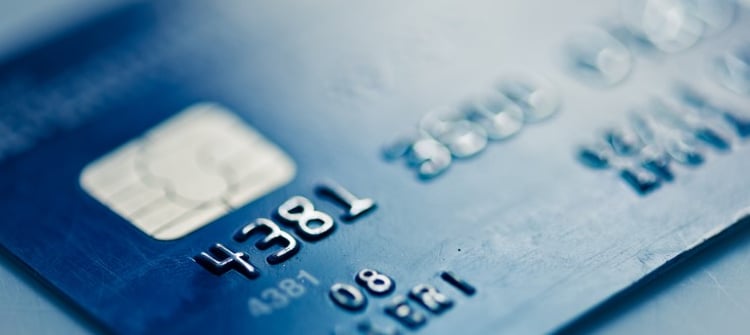
With the increase in fuel card fraud, it is more important than ever to understand your risk and how to mitigate it. As scammers become more and more sophisticated, setting up the right controls and monitoring your invoices are essential to protecting your team from unauthorized charges. Managers should also take time to review their vendor's Terms & Conditions so they understand what will (and won’t) be covered in the case of fraud. Here are a few tips to guide you through the setup process and help ensure your fuel card program is secure.
What is the biggest fraud risk?
To help you understand the intricacies of some fuel card companies’ fraud policies, let’s explore one of the biggest risks in the United States: card skimming. Scammers create discreet coverings that go over a credit card slot and steal the information of every card used at that terminal. Learn how drivers can help prevent fuel card fraud. Card skimming generates over $2 billion in fraud annually.
Know your vendor's fuel card fraud policy.
The biggest challenge for many users is the size of their fleet, which excludes them from most of the fraud protection policies of major fuel card companies. Two of the largest card issuers will not provide fraud coverage for fleets with more than 10 cards, as the U.S. Truth in Lending Act limits protections for cardholders at that magic number. Be sure your provider isn’t only offering the bare minimum mandated by law.
If you have more than 10 cards or 20 vehicles, research extensively to protect your company! Not knowing the policy can cause horrible headaches down the line. There are other vendors that do not limit our fraud coverage based on the number of vehicles or cards, so you can rest easy knowing you will not be penalized for having a large fleet.
Given the risks, it is important to know whether your vendor will cover white fraud. P-Fleet’s fuel cards cover white fraud across the board, though it is essential to report the problem as soon as possible so we can replace the affected cards. We cover all white fraud reported within a 45-day period, so reach out to P-Fleet’s customer service team if you suspect a problem.
Prevent fuel card fraud.
In addition to checking your policy to confirm your fleet is covered, there are many preventative measures companies can take to protect themselves. The most vital of these steps is to review your invoices for inconsistencies or unexpected transactions. Here are a few red flags to check for:
- Locations: When cards are skimmed, the information is often sold to another party, at times in a different region. If cards are suddenly being used out of state, or in an area where your company does not operate, this can be a clear indicator of fraud.
- Frequency of Transactions: Unless your drivers are covering vast distances, it is unusual for multiple transactions to take place in a single day. On the flip side, fraudsters want to maximize their gain before the skimmed cards are cancelled, so they will place multiple transactions until the card is declined.
- Odometer Entries: When cards are skimmed, the information from that transaction is copied exactly, and most scammers aren’t savvy enough to update the odometer information for their next purchase. Review your fuel card odometer policy with your drivers and monitor your invoices for repeat odometer readings or irregular entries like 1111, 22222, or 12345.
- Time Variances: Most companies won’t operate on the weekends, but scammers don’t follow a steady schedule. Keep an eye on oddly-timed purchases and confirm they were actually made by your employees.
- Transaction Amounts: Fraud is often easy to spot because scammers will try to maximize their gain from each transaction. If you see transactions for higher amounts than normal, it’s a good time to reach out to your drivers for confirmation. Additionally, round numbers (e.g. $100, $200, or 100 gallons) are also red flags you should watch for.
- Fuel Type: If your diesel driver is suddenly filling up with premium unleaded, it might be time for a follow-up call.
Be proactive.
In conjunction with reviewing your invoice every month, managers can reduce fraud before by implementing comprehensive fuel card purchase controls. Here are a few best practices to protect your company:
- Limiting by Region: Setting restrictions so cards can only be used in your area is essential in a world where stolen card data can be sent across the country with a few clicks.
- Transactions Per Day: If your drivers only fill up once per day, this is an excellent setting to limit what scammers can purchase.
- Authorized Fueling by Time and Day: If your drivers work on a distinct schedule, you can use this option to limit transactions to the times they would normally fuel.
- Gallons or Dollars Per Day or Week: Depending on your card, you can set up maximum limits that fits your vehicles usage.
These restrictions are extremely easy to set up, and you’ll pat yourself on the back for limiting fraud before it even happens.
Stay alert.
After putting these controls into place, you can take your fraud protection to the next level by setting up alerts which will instantly notify you of flagged activity. Here are a few essential fuel card alerts which can keep you in-the-know as your drivers conduct their business:
- Product Exceptions: Set product alerts, like unleaded usage, to help curb abuse. Fueling that differs from normal purchasing patterns is reported to you so you can ensure the transaction was legitimate.
- Card Watch: With this alert, you will receive notifications whenever a specific card is used. This can be an excellent way to monitor a card that has had previous issues.
- Time or Day of Purchase: Set alerts for fueling that occurs at night or on weekends, as these are prime times for scammers to attempt to run their stolen card info.
- Fueling Location: This alert allows you to identify driver fueling that doesn’t occur at designated fuel locations.
If you notice any irregularities, confer with your drivers to see if a purchase was legitimate. If not, reach out to your vendor’s customer service team as soon as possible so the compromised cards can be cancelled.
Conclusion
With the rise in white card fraud, it is essential to protect your fleet from unauthorized charges. Setting up controls can save you time and money in the future, and monitoring your invoices will allow you to quickly discover any unexpected charges. If you manage a large fleet, research fraud policies diligently, as many fuel card companies will not cover customers with over 10 to 20 cards.




